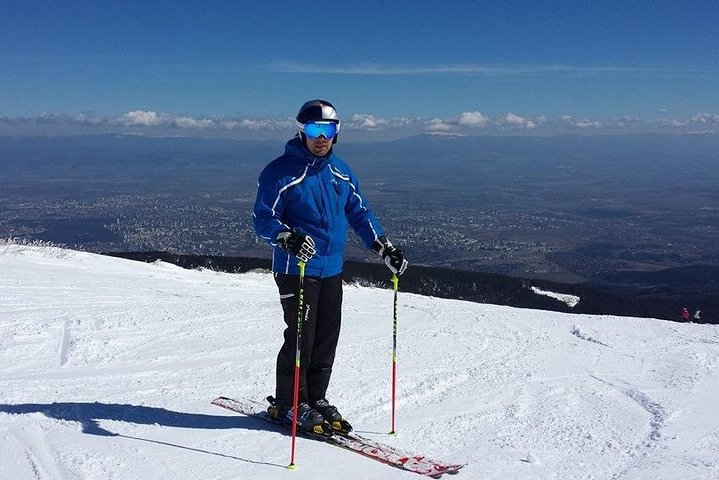Why choose this tour ?
Sofia is a city with an ancient history: one of the three most ancient cities in Europe. The city was part of the Roman Empire, part of the Bulgarian Empire, part of East Roman Empire. After 14 c. the city was part of the Ottoman Empire . Sofia became the new capital of Bulgaria in 1879. (After the Liberation of Bulgaria from the Ottoman Empire). In that city Bulgarians, Turks, Jews, Armenians and other lived together for hundreds of years. .
 Add to wishlist.
Add to wishlist.
 Give this as a gift: Give the ones you love unforgettable travel experiences and make memories to last a lifetime.
Give this as a gift: Give the ones you love unforgettable travel experiences and make memories to last a lifetime.
 Reserve now & pay later to book your spot and pay nothing today.
Reserve now & pay later to book your spot and pay nothing today.
 Free cancellation up to 24 hours before the experience starts (local time).
Free cancellation up to 24 hours before the experience starts (local time).
Make the most of your adventure
What makes Walking Tour With Entry Tickets For The Ancient Serdica Complex a unique experience ?
is one of the oldest church in the Bulgarian capital Sofia, dating to the fourth century. In the predecessor building took place the Council of Serdica held most probably in 343 and attended by 316 bishops.
is a Late Antique red brick rotunda in Sofia, Bulgaria. Built in the early 4th century as Roman baths, it became a church inside the walls of Serdica, capital of ancient Dacia Mediterranea during the Roman Empire and Byzantine Empire
In 1889 the Austrian architect Emil von Förster won an international competition for a mineral bath with a hotel and started the construction of the building. Four years later the building of the hotel was suspended due to a shortage of funds.After the Second World War, the large bathroom was restored and officially proclaimed as monument of culture of local importance. Due to depreciation in 1986, the building was closed for visitors and completely abandoned after 1989. In the mid-1990’s, the building was gradually restored. From 2015, it houses the Museum of History of Sofia
The mosque was designed by the famous Ottoman architect Mimar Sinan and completed in 1566, during the years the Ottomans had control of the city. The mosque derives its name from the phrase Banya Bashi, which means many baths.
The Western Gate of Serdica is protected by towers – in the preserved section of the fortress wall a pentagonal tower is next to the gate and another triangular tower – in close proximity. The Western gate of Serdica is located between "St. Joseph" Catholic Cathedral, Todor Alexandrov boulevard and the Monument Symbol of the City of Sofia.
The building of the Central Sofia Synagogue is rightly described as the pride of the Bulgarian Jewish community. It is one of the three largest Sephardic (Spanish-Jewish) synagogues in Europe and the largest on the Balkan Peninsula.
dbcncjdcdj
A museum with part of the Roman City Serdica
Zhenski Pazar Market (Bulgarian: “Женски пазар”) is the oldest market in Sofia. Established more than 140 years ago, it has become one of the most important trading centres in the metropolitan city.The market is located in the so-called Area of Tolerance in Sofia. The name itself is coined after the close proximity of the temples of all the official religious communities in Bulgaria. Here you can find the church “Saints Cyril and Methodius“, the “Banya bashi” Mosque, and the Central Synagogue of Sofia.
The Library's collection contains nearly 8.5 million documents. Every year, it receives about 70 000 publications. The National Library “St. St. Cyril and Methodius” is the largest book treasury in Bulgaria. We will visit the Library inside.
Tour Description & Additional Info:
- Wheelchair accessible
- Infants and small children can ride in a pram or stroller
- Service animals allowed
- Public transportation options are available nearby
- Transportation options are wheelchair accessible
- All areas and surfaces are wheelchair accessible
- Suitable for all physical fitness levels
- The tour includes the travel time from place to place
Options To Choose for Your Trip:
Walking Tour With Entry Tickets For The Ancient Serdica Complex Inclusions:
Included with Your Ticket
- Ticket for the Metro
- Tickets for museums: The Ancient Complex Serdica
- English guide
Trending Nearby Tours Likely To Sell Out
Special Instructions:
- This Tour is Provided by Peter's Tours.
- Tour Timezone & Starts at Europe/Sofia.
- Mobile or paper ticket accepted.
- For a full refund, cancel at least 24 hours before the scheduled departure time.
- Minimum 1 Travelers is required to book.
- Maximum 15 Travelers is accepted for booking.









